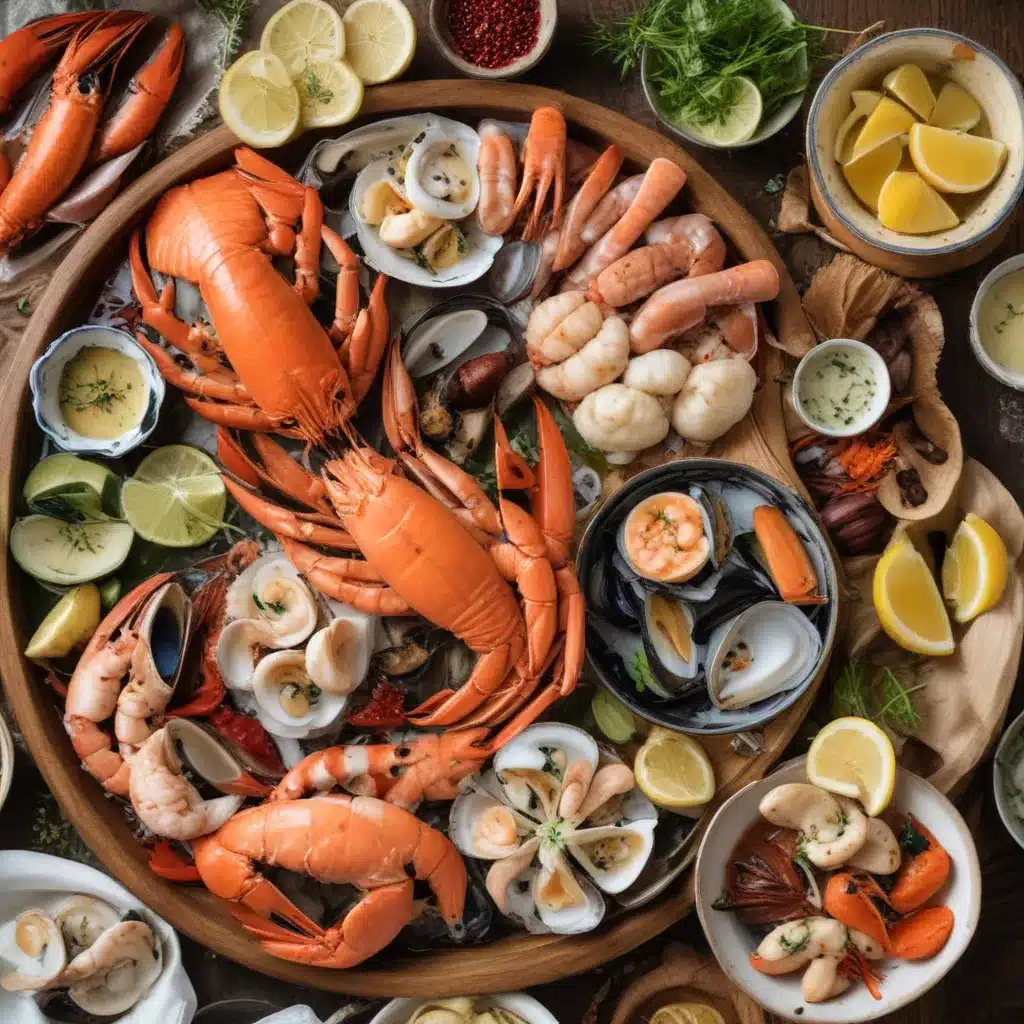
Seafood Traditions from Around the Globe: Discovering Culinary Diversity
The vast expanse of the world’s oceans offers a bountiful feast for the senses, with diverse seafood cultures and traditions spanning the globe. From the delicate balance of Japanese sushi to the robust stews of West Africa, the culinary tapestry woven by the sea is a testament to the ingenuity and creativity of human civilizations.
Seafood Cultures of the Pacific Rim
Venture into the vibrant heart of the Pacific, and you’ll be greeted by the captivating sushi and sashimi traditions of Japan. These delicate bites of vinegared rice paired with the freshest cuts of tuna, salmon, or yellowtail embody the art of simplicity, where every element – from the glistening nori (seaweed) wrap to the deftly applied wasabi – is a celebration of the sea’s bounty.
Across the vast archipelago of the Philippines, the coastlines beckon with their seemingly endless supply of seafood. Tinapa, or smoked fish, and the iconic kinilaw (Filipino ceviche) showcase the country’s mastery of preserving and transforming the ocean’s gifts. Meanwhile, the sinigang – a tangy, tamarind-based soup brimming with shrimp, fish, and vegetables – represents the perfect balance of flavors that defines Filipino cuisine.
Further south, the island nation of New Zealand boasts a coastal cuisine that is both diverse and sustainable. The Māori people’s reverence for the sea is evident in dishes like hangi-steamed mussels and pāua (abalone) served with fragrant kawakawa leaves. Innovative chefs also showcase the country’s pāua and Bluff oysters in contemporary interpretations that honor local traditions.
Mediterranean Seafood Specialties
Crossing the vast expanse of the Mediterranean, we find a treasure trove of seafood delicacies. In Italy, the cuttlefish risotto and brodetto di pesce (mixed seafood stew) exemplify the region’s mastery of brine-kissed flavors. The simple yet stunning spaghetti alle vongole (spaghetti with clams) highlights the bounty of the Adriatic.
Further west, the Iberian Peninsula offers its own seafood specialties. Galicia, in Spain, is renowned for its percebes (goose barnacles) and pulpo a la gallega (Galician-style octopus). Meanwhile, Portugal is celebrated for its bacalhau (salted cod) dishes, from the iconic pastéis de bacalhau (cod fritters) to the hearty bacalhau à brás (shredded cod with eggs and potatoes).
Greece’s coastal regions have long been nourished by the sea, evident in dishes like garides saganaki (shrimp baked in a tomato-feta sauce) and octopus with pasta. The simple yet sublime grilled whole fish with a squeeze of lemon and a drizzle of olive oil epitomizes the essence of Greek coastal cuisine.
Scandinavian Smoked and Cured Seafood
In the chilly waters of Scandinavia, seafood preservation techniques have evolved over centuries, resulting in a culinary tradition that celebrates the cold-smoked, gravlax, and pickled bounty of the North Atlantic. Gravlax, the iconic Nordic dish of cured salmon, is often paired with the bracing flavors of aquavit, a caraway-infused spirit that cuts through the rich, fatty fish.
Herring, a staple in Scandinavian diets, appears in myriad forms, from the matjes (lightly cured) to the sill (pickled) varieties. These brine-cured herring dishes, often served with potatoes and crème fraîche, are a testament to the resourcefulness and culinary ingenuity of the region.
Coastal Cuisines of West Africa
Along the rugged coastlines of West Africa, seafood traditions thrive, nourished by the abundant marine life of the Atlantic Ocean. In Senegal, the thieboudienne – a flavorful fish and rice stew – is a centerpiece of the country’s culinary identity. Further south, Ghanaian cuisine embraces the bounty of the sea with dishes like kelewele (fried plantain) served alongside grilled whole fish.
The diverse octopus dishes of Morocco showcase the region’s innovative spirit, from the simmered in tomato and paprika to the grilled and served with a chermoula (herb and spice) marinade.
Sustainable Seafood Practices
As the global demand for seafood continues to rise, the importance of sustainable practices has never been more crucial. Aquaculture, the farming of fish and shellfish, has emerged as a crucial strategy to meet this demand while preserving the health of our oceans. Innovative techniques in recirculating aquaculture systems and integrated multi-trophic aquaculture minimize the environmental impact of seafood production.
Alongside aquaculture, the adoption of ethical fishing methods, such as hook-and-line and long-line techniques, helps to reduce bycatch and maintain delicate ocean ecosystems. Worldwide, conservation efforts like marine protected areas and catch-and-release programs aim to safeguard the future of our marine resources.
Changing Seafood Consumption Trends
In recent years, the seafood industry has witnessed a significant shift in consumer preferences. The rise of plant-based seafood alternatives, developed to mimic the taste and texture of traditional seafood, has appealed to a growing demographic of flexitarian and vegan consumers. Additionally, the demand for locally-sourced and sustainably-caught seafood has surged, as conscious consumers seek to minimize their environmental footprint and support local fisher communities.
However, the challenge of overfishing remains a global concern, as certain species struggle to replenish their populations. Educating consumers, promoting sustainable fishing practices, and embracing indigenous seafood traditions will be crucial in shaping the future of seafood diversity and availability.
The Future of Seafood Diversity
As we look ahead, the future of seafood diversity hinges on our collective efforts to preserve traditional culinary practices, foster innovation in sustainable aquaculture, and adapt to the changing climate’s impact on marine ecosystems. By embracing the rich tapestry of global seafood traditions, we can ensure that the world’s oceans continue to nourish and delight us for generations to come.
Discover the enchanting flavors and techniques that define seafood cultures around the world. Whether you’re savoring the delicate balance of Japanese sushi or indulging in the robust stews of West Africa, the diversity of seafood traditions is a testament to the ingenuity and resourcefulness of humanity. Explore the myriad ways in which the sea’s bounty has shaped the culinary landscapes of cultures worldwide, and join us on a voyage of discovery at Fish Tales Cafe.

